Profile(English)

Message from the President
Since our establishment in 1947, Makoto Corporation has been growing as a manufacturer specializing in sesame seed products. Sesame seeds have been produced since ancient times. The fact that the famous phrase “open sesame” from the Arabian Nights derives from the sesame speaks of its history. Of course, sesame seeds have been grown since long ago in Japan as well; it is believed that production of sesame seeds in the country began during the Jomon Period (circa 14000 BCE – 10th century BCE). Since then, sesame seeds have taken root in the Japanese culinary culture. Today sesame seeds are regarded as an important ingredient as a functional food based on the findings of recent researches on the various health benefits of the components of sesame seeds.
Committed to safety and continuous improvement, we operate under the following company policy on food safety: For the purpose of assisting our customers in leading a healthy and rich life, we, as a manufacturer specializing in sesame seed products, will steadily supply high quality sesame seed products that meet the demands and expectations of our customers under the motto “safe and reliable” by building a food safety management system.
Since we are producing food, the highest priority must be given to safety and reliability. At the same time, we rigorously select high-quality ingredients and conduct flavor testing in order to supply delicious sesame seed products to our customers. We will continue to observe our food safety policy to meet customer expectations and stive to contribute to the Japanese culinary culture by supplying safe, reliable, and delicious sesame seed products. We hope you enjoy our products.
Company profile
Company’s name :MAKOTO & CO.,LTD.
LocationHead Office : 8-10,SOTOKANDA4-CHOME,CHIYODA-KU,TOKYO 101-0021 JAPAN
Establishment : Showa Era 27(Year 1952)
Foundation : Showa Era 22 (Year 1947)
Representative : Teruko Kato, Representative Director & President.
Employee : 68people
Business : Manufacturing and Sales food. mainly Sesame products.
Member group : National Federation of Sesame Processing Associations
Saitama Plant :2190-1, MIWANOE, YOSHIKAWA-CITY, SAITAMA,342-0027,JAPAN
Authentication information
Saitama plant has acquired FSSC 22000.
Registered business : MAKOTO&CO.,LTD Saitama plant.
Examination registration scope : Manufacture of processed sesame for food
Business establishments included in the scope of certification : MAKOTO&CO.,LTD Saitama plant.
Applicable standards : FSSC22000 / ISO22000 : 2018
Registration number : JMAQA-FC223 / JMAQA-F296
Registration date : July 20, 2018
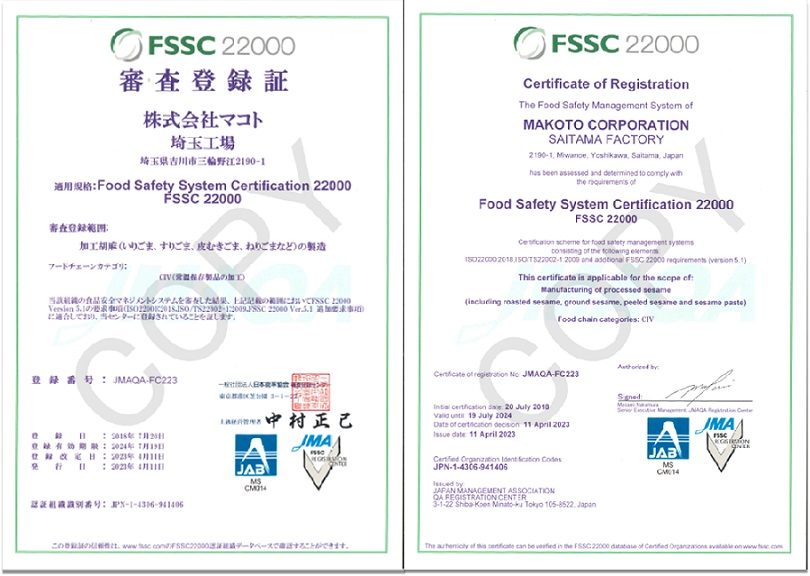
FSSC22000 Certificate of Registration (Saitama Plant)
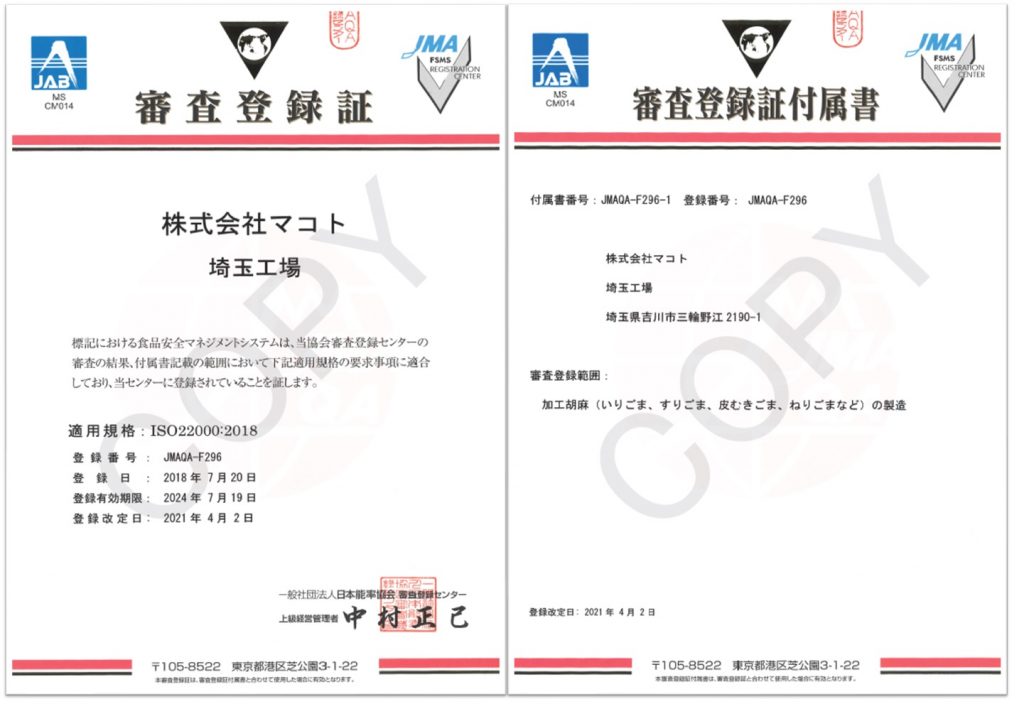
ISO22000 Certificate of Registration (Saitama Plant) and the Appendix
Facts about Sesame Seeds
Introduction to the Sesame
An annual plant in the genus Sesamum of the family Pedaliaceae. The plant grows to be about 150cm tall. One sesame plant produces about 20 to 30g of sesame seeds. It is believed that sesame plants were being grown in the savanna near the Nile located in central Africa about 5,000 years ago. The plant was then introduced to India. Researchers have found from the ruins of Moenjodaro that a considerable amount of sesame seeds were being produced there around 3000 BCE. Later on, the sesame plant was introduced to Japan from China. It is believed that production of sesame seeds in Japan began during the final period of the Jomon Period (circa 14000 BCE – 10th century BCE).
Production Process
How Sesame Seed Products Are Made ~Introducing Each Process~
〇 The Production Process of Roasted White Sesame Seeds (Small Packet)
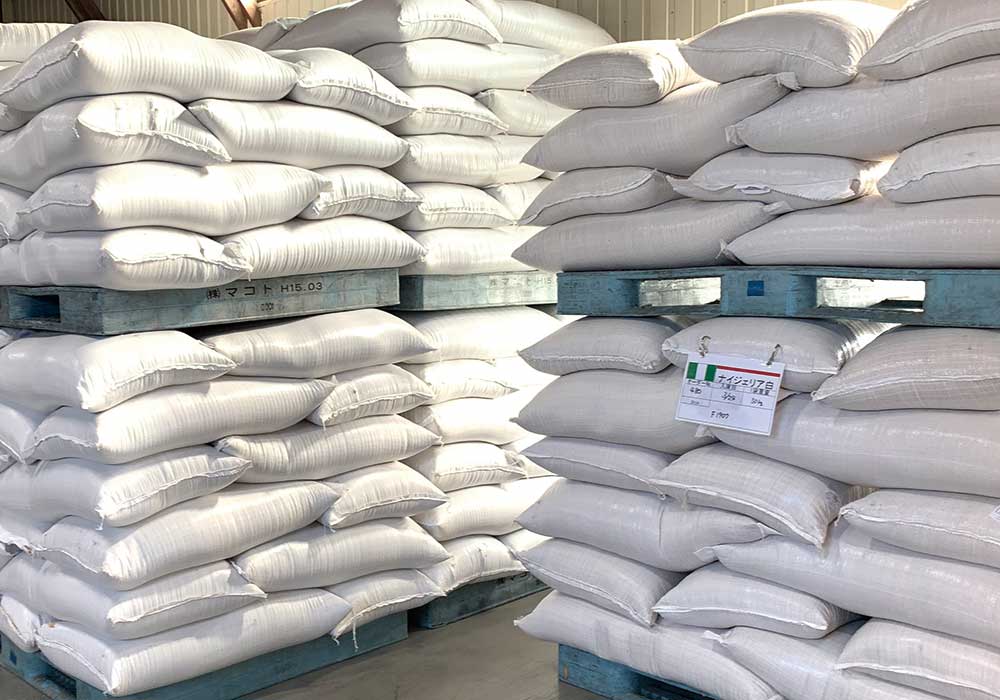
Arrival from Raw Material Storage
Imported raw sesame seeds are temporarily stored in storage facilities at ports where pesticide residue testing and other tests are conducted for each lot. We accept 10 to 20 tons of raw sesame seeds each day at our plants.

Specific Gravity Separator
A specific gravity separator is used to remove objects that are heavier than sesame seeds. Buoyant force is applied on the sesame seeds using a suction blower from the top and clumps of soil, stones, and other objects are removed by vibrating an inclined mesh base.

Magnetic Separator
Impurities are sorted out of the product using high-strength magnets. Impurities like magnetic dirt and stones are removed in this process.
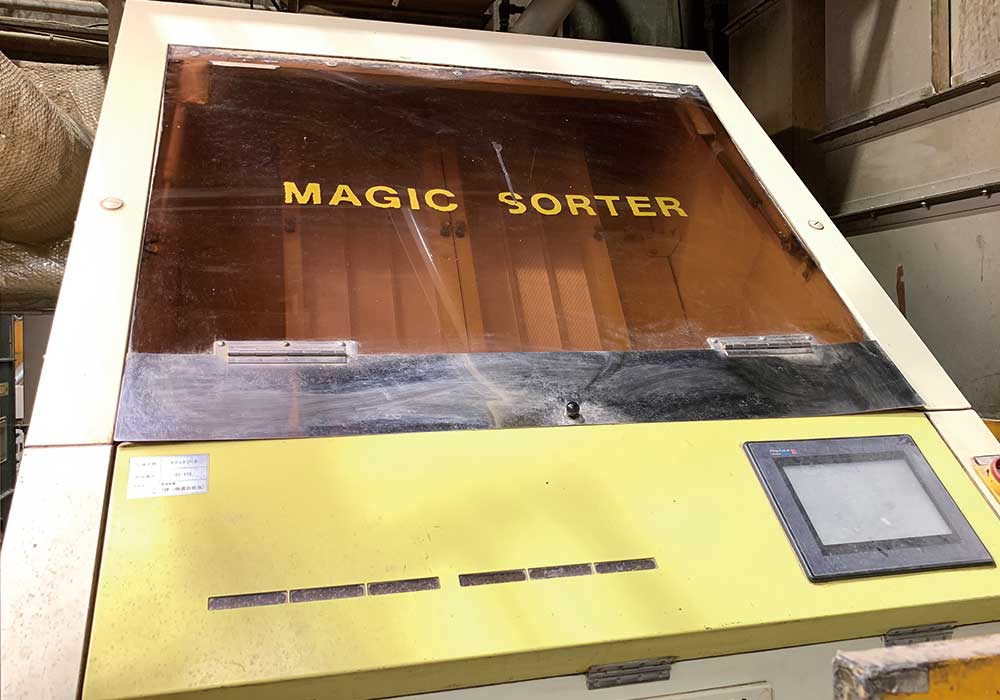
Color Sorter
Objects blacker than sesame seeds are detected by a camera and removed by blowing air. After impurities are removed by the sorter, a worker checks the degree of sorting and then the sorted sesame seeds are sent to the next process.

Color Sorter
Impurities are detected by a camera, which identifies colors, and removed by blowing air. After impurities are removed by the sorter, a worker checks the degree of sorting and then the sorted sesame seeds are sent to the next process.
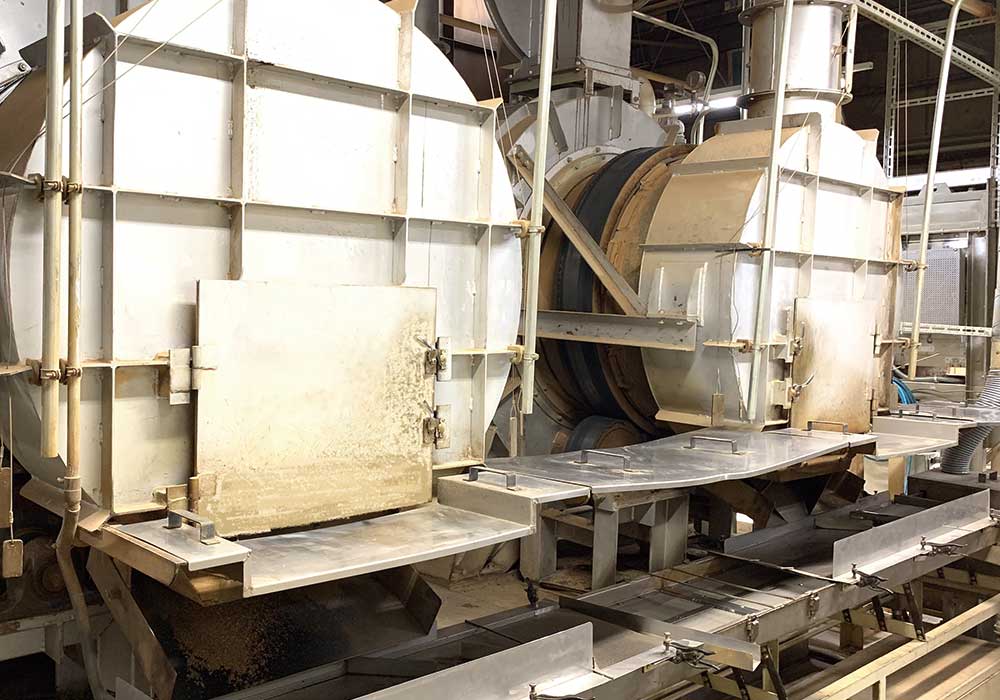
Roaster
Sorted sesame seeds are fed into a roaster. The machine in the picture is a direct fire roaster. The seeds are roasted gradually over a long period of time so they become fully puffed and aromatic.
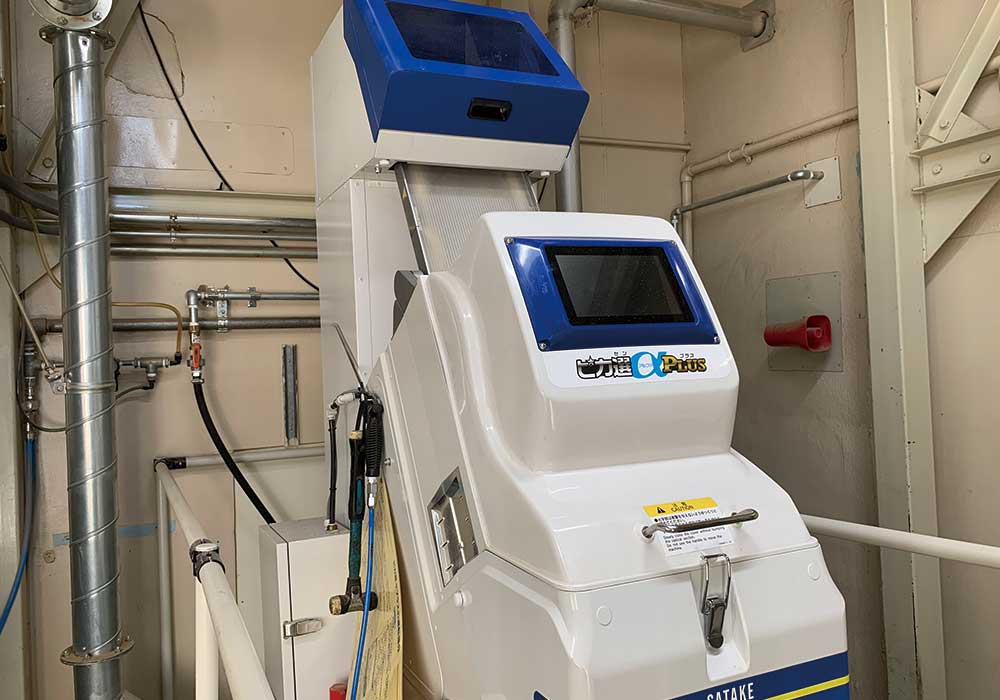
Color Sorter
To remove burnt seeds and pieces after roasting, black objects are detected with a full-color CCD camera and removed by blowing air.

Packaging Machine
Home use products are fed into an automatic weighing machine and packaged by a packaging machine. Packaged products are inspected with a metal detector and a weight checker followed by a final check by a product inspector. Finally, the packaged products are packed for shipping.
Production Process of Sesame Paste

Grinder (Stirring Machine)
Sesame seeds are ground and stirred by a machine with a stone mill-like structure until they turn into a thick, smooth paste.
Sesame Seed Product Types
Bottled flavored sesame seeds
Seasoned sesame seeds with yuzu, wasabi, and plum flavors. It goes perfectly with the flavor of sesame and is very delicious.
Roasted Sesame Seeds (for home/commercial use)
Sesame seeds that are roasted after removing impurities.Optimal for using as a topping as the sesame seeds retain their original shape.
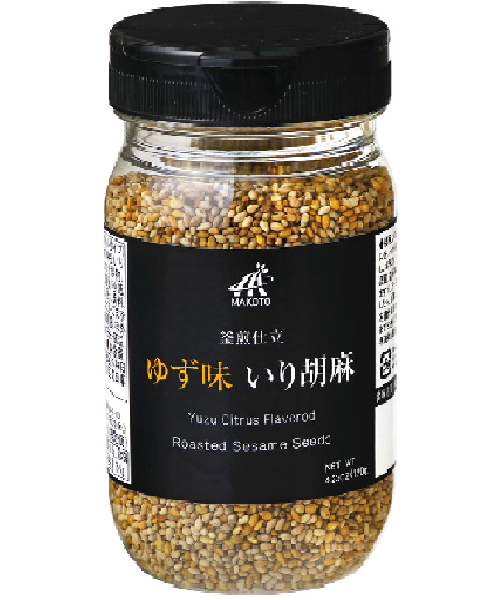
Yuzu Citrus Flavored Roasted Sesame Seed 120g
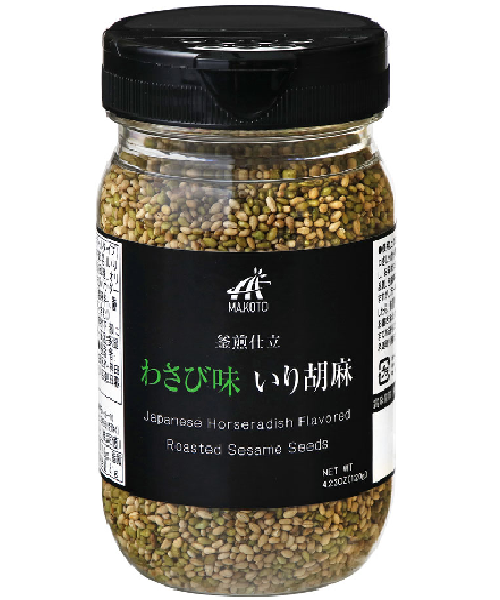
Japanese Horseradish Flavored Roasted Sesame Seed 120g
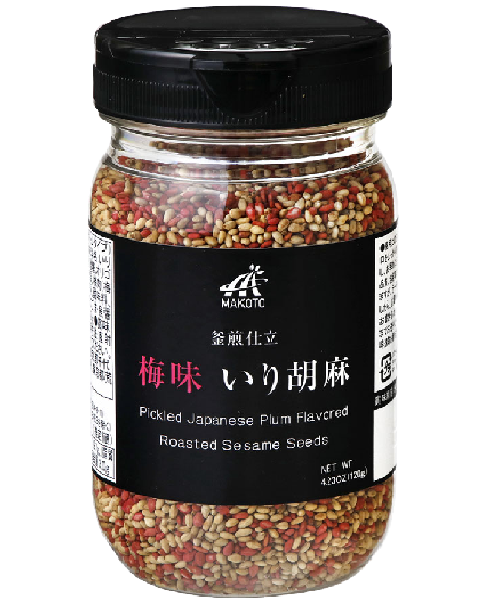
Pickled Japanese Plum Flavored Roasted Sesame Seed 120g
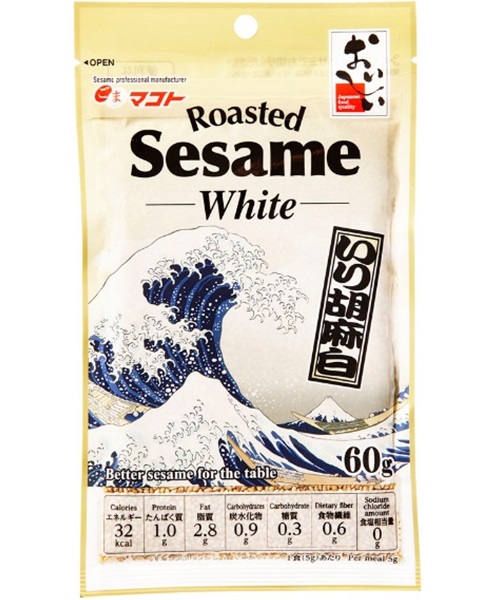
Irigoma siro 60g (Roseted Sesame White Ukiyoe package)

Irigoma kuro 60g (Roseted Sesame Bkack Ukiyoe package)
Roasted Sesame Seeds (for home/commercial use)
Sesame seeds that are roasted after removing impurities.Optimal for using as a topping as the sesame seeds retain their original shape.
Ground Sesame Seeds (for home/commercial use)
Sesame seeds that are ground after roasting. Optimal for salad dressing as the aroma of sesame seeds is brought out by grinding them. In addition, the nutrients of sesame seeds are absorbed better by our body when they are ground.
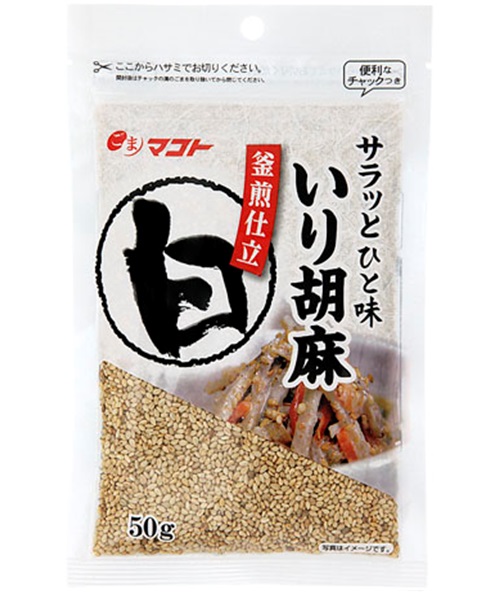
A sprinkle for added flavor: Roasted White Sesame Seeds 50g (with zipper)
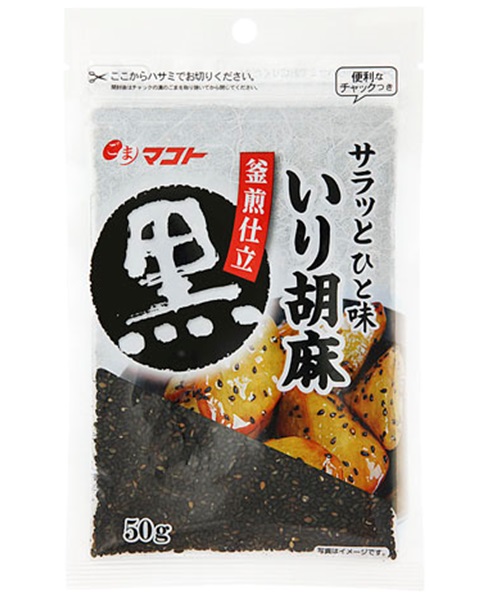
A sprinkle for added flavor: Roasted Black Sesame Seeds 50g (with zipper)
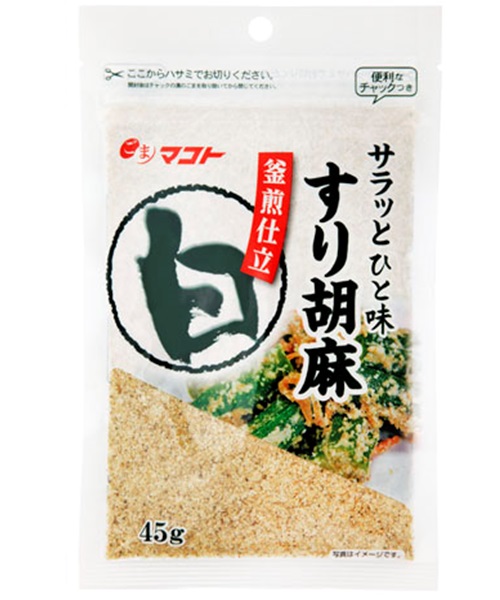
A sprinkle for added flavor: Ground White Sesame Seeds 45g (with zipper)
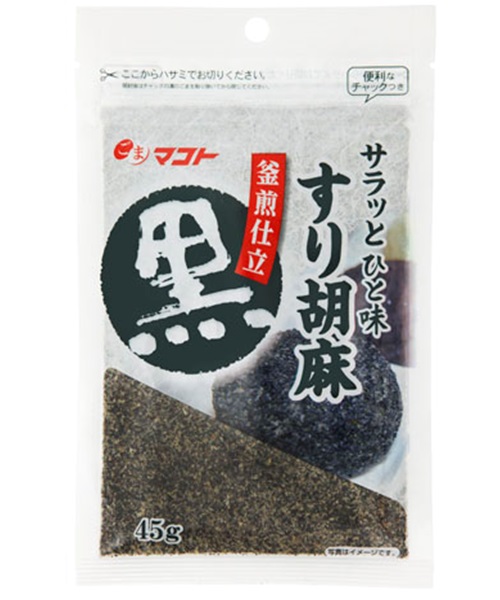
A sprinkle for added flavor: Ground Black Sesame Seeds 45g (with zipper)
Organic Hulled Sesame Seeds
As their outer skin is removed, the natural sweetness of sesame seeds is brought out.Hulled sesame seeds are the most common type of sesame seeds consumed in America and other foreign countries. The sesame seeds used on hamburger buns are hulled sesame seeds.
Sesame Paste (for home/commercial use)
Roasted sesame seeds are ground into a paste and thickened by stirring.Optimal as a dip or for making sesame tofu, this is a popular product with a wide range of uses.

Organic Hulled Sesame Seeds 100g
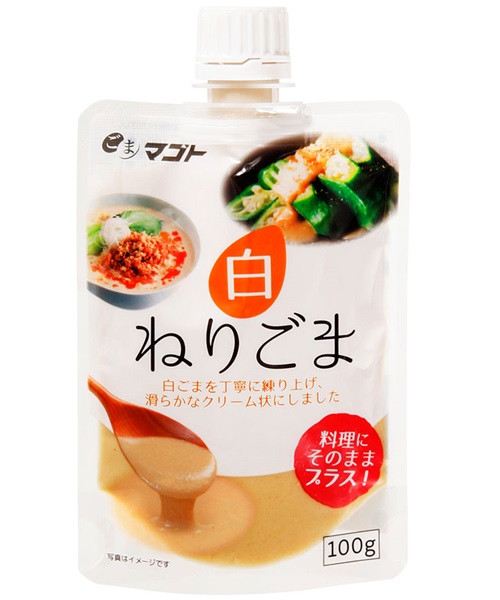
White Sesame Paste Stand Up Pouch 100g
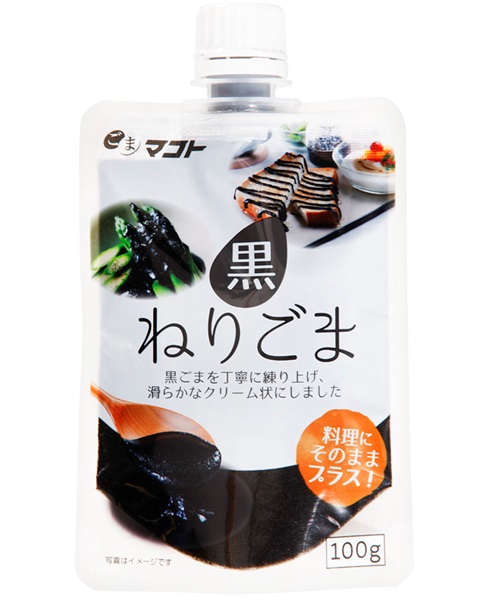
Black Sesame Paste Stand Up Pouch 100g
Goma Tofu (Sesame Tofu)
Prepared by pressure assisted thermal sterilization, this product is easy to handle as its best before period is 365days from the production date when distributed at room temperature. A smooth, healthy vegetable food with a chewy texture like rice cakes, sesame tofu is a menu item loved by a wide range of people from vegetarians to those interested in healthy eating.

Goma Tofu (Sesame Tofu) White 120g
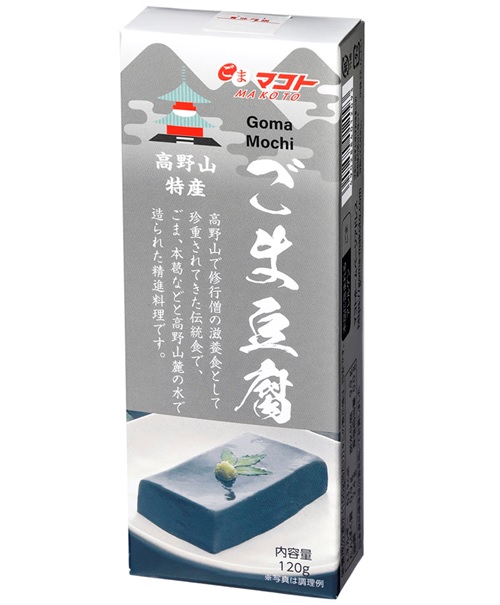
Goma Tofu (Sesame Tofu) Black 120g
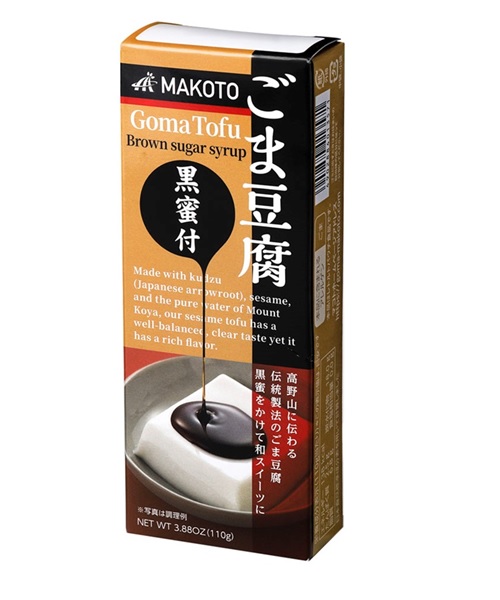
Goma Tofu (Sesame Tofu) 【Brown sugar syrup】100g
Tasty Recipes
White (Black) Sesame Mousse: Instructions

【Ingredients】
・Sesame paste (white) 25㏄
・Sugar 20㏄
・Milk 100㏄
・Heavy cream 36㏄
・Gelatin solution* 20㏄
* A solution prepared by mixing water and gelatin powder at a ratio of 4 to 1 and letting the gelatin “bloom.”
【White (Black) Sesame Mousse: Instructions】
- A: Mix white sesame paste and sugar. Add milk gradually while stirring the mixture.
- B: Whip the heavy cream to soft peaks.
- Add A to B gradually and fold B into A.
- Add the gelatin solution to the mixture and mix well. After the ingredients are mixed thoroughly, place the bowl on top of a larger bowl filled with ice and water to cool down the mixture somewhat while mixing it again. Pour the mixture into a mold (container) and place it in the refrigerator to cool it down until it becomes firm.
- When serving, turn it into a café-quality mousse by adding seasonal cut fruits, pouring mango or any other syrup over it, and/or decorating it with whipped cream.
* Use black sesame paste when making a black sesame mousse. All ingredients except for the sesame paste and all instructions are the same as those for the white sesame mousse.
Sesame Sauce (for buckwheat noodles and udon noodles)
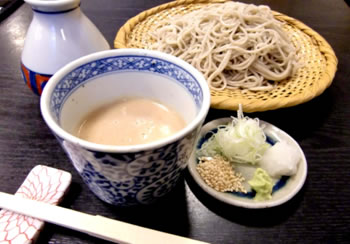
【Ingredients (4 servings)】
A: Water 600ml, Dried kelp (konbu) 4g, Dried shiitake mushrooms 2, High-quality bonito flakes 40g
B: Sesame paste (white) 150g, Soy sauce 100 cc, Sugar 20g, Mirin (sweet cooking rice wine) 20 to 30 cc
【Sesame Sauce: Instructions】
- Make a soup stock with A, mix it well with B and warm the mixture up at low/medium heat. (Adjust the amount of sesame paste (white) according to your preferences.)
- Place the mixture in the refrigerator to cool it down.
★Add your favorite condiments to the sauce.
★This sauce can be made by mixing a commercially available non-concentrated noodle sauce (men-tsuyu) and sesame paste.
